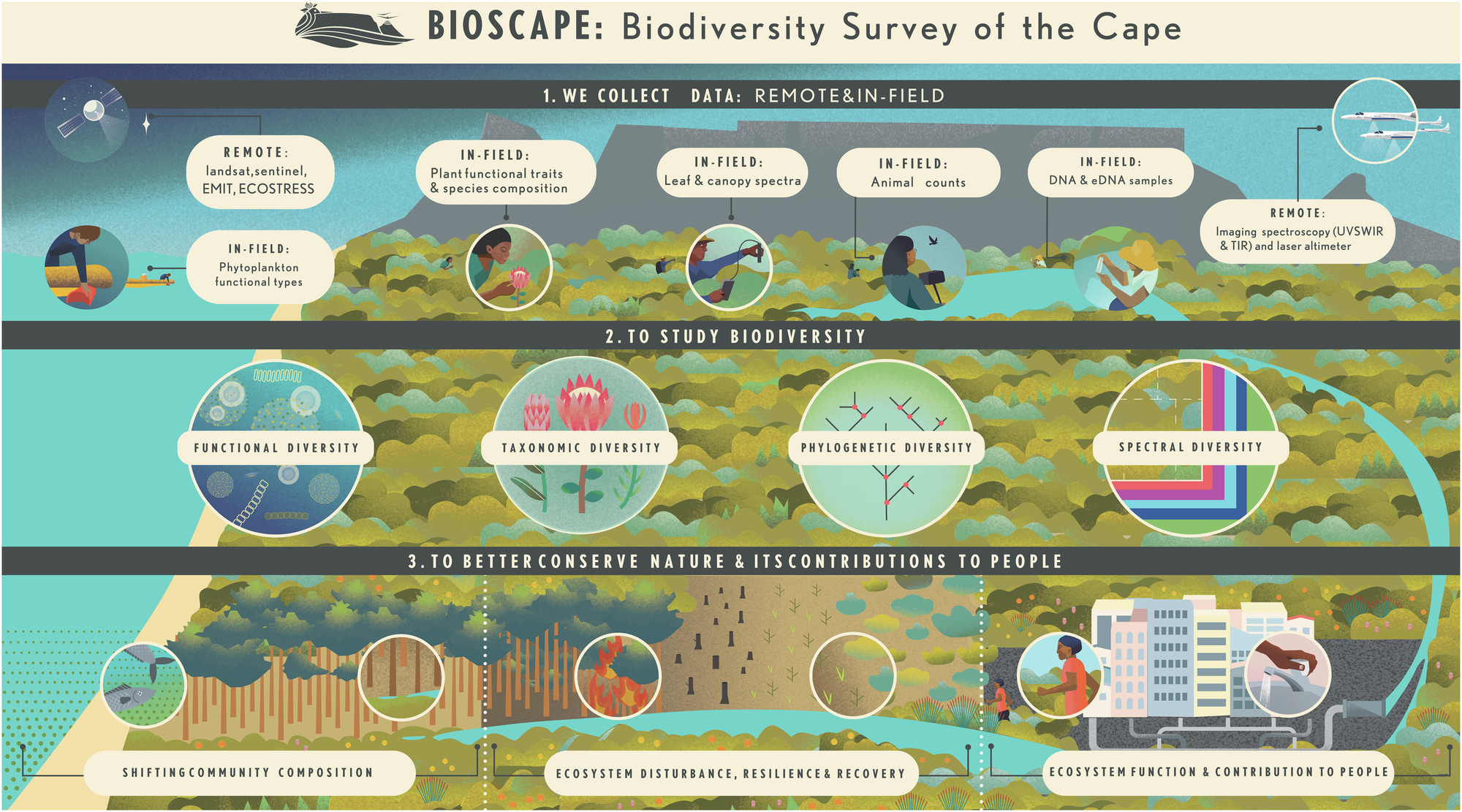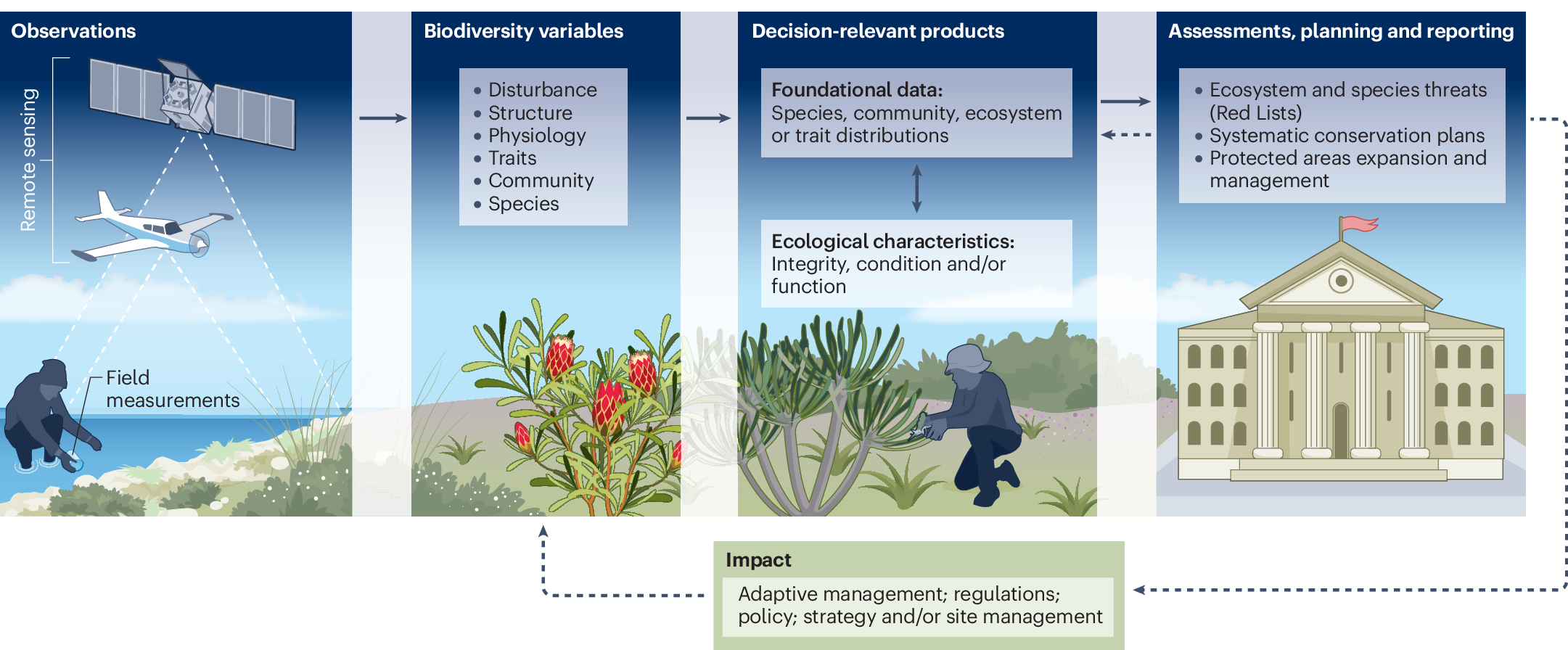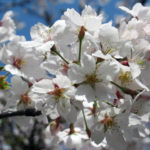2025-02-03 バッファロー大学 (UB)
<関連情報>
- https://www.buffalo.edu/news/releases/2025/02/bioscape-shows-how-life-on-Earth-can-be-measured-from-space.html
- https://www.nature.com/articles/s44185-024-00071-5
- https://www.nature.com/articles/s44358-024-00007-8
ケープ州の生物多様性調査(BioSCape)、リモートセンシングと生物多様性科学を統合 The biodiversity survey of the Cape (BioSCape), integrating remote sensing with biodiversity science
Anabelle W. Cardoso,Erin L. Hestir,Jasper A. Slingsby,Cherie J. Forbes,Glenn R. Moncrieff,Woody Turner,Andrew L. Skowno,Jacob Nesslage,Philip G. Brodrick,Keith D. Gaddis & Adam M. Wilson
npj Biodiversity Published:03 February 2025
DOI:https://doi.org/10.1038/s44185-024-00071-5

Abstract
There are repeated calls for remote sensing observations to produce accessible data products that improve our understanding and conservation of biodiversity. The Biodiversity Survey of the Cape (BioSCape) addresses this need by integrating field, airborne, satellite, and modeling datasets to advance the limits of global remote sensing of biodiversity. Over six weeks, an international team of ~150 scientists collected data across terrestrial, marine, and freshwater ecosystems in South Africa. In situ biodiversity observations of plant and animal communities, estuaries, kelp, and plankton were made using traditional field methods as well as novel approaches like environmental DNA and acoustic surveys. Biodiversity observations were accompanied by an unprecedented combination of airborne imaging spectroscopy and lidar measurements acquired across 45,000 km2. Here, we review how the approaches applied in BioSCape will help us measure and monitor biodiversity at scale and the role of remote sensing in accomplishing this.
BioSCape:地元の知識とリモートセンシング技術を組み合わせた包括的な生物多様性科学 BioSCape combines local knowledge and remote-sensing technology for inclusive biodiversity science
Anabelle W. Cardoso & The BioSCape Consortium
Nature Reviews Biodiversity Published:15 January 2025
DOI:https://doi.org/10.1038/s44358-024-00007-8
An Author Correction to this article was published on 30 January 2025
This article has been updated

The Biodiversity Survey of the Cape (BioSCape) in South Africa’s Greater Cape Floristic Region aims to test the limits and potential of remote sensing for biodiversity applications. Integrating field biodiversity measurements and local knowledge with advanced remote sensing, BioSCape brings us closer to measuring key biodiversity variables globally from space.


